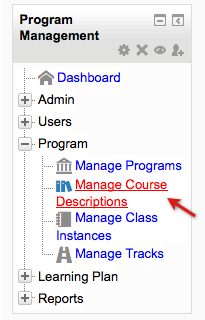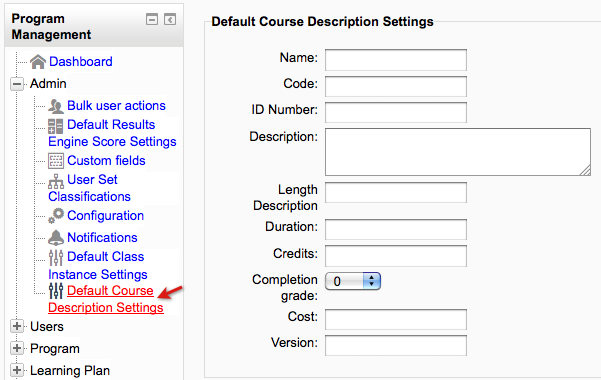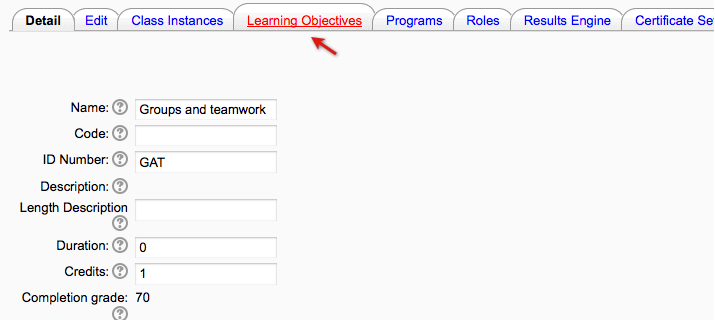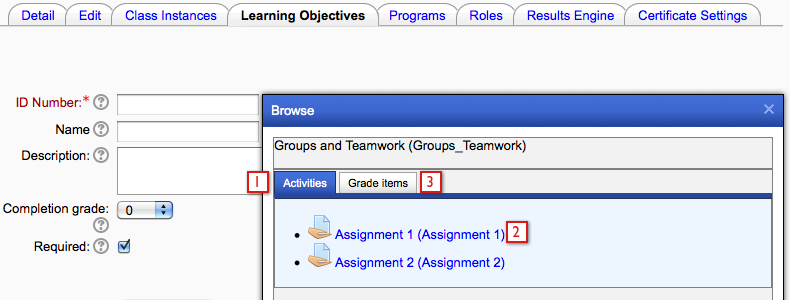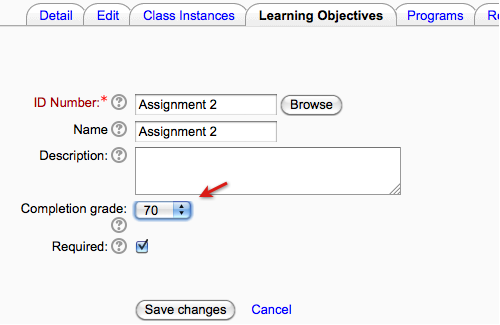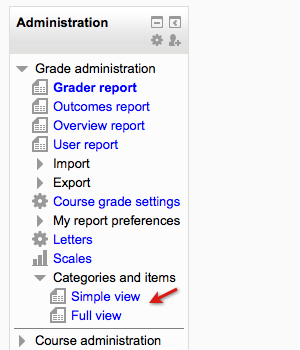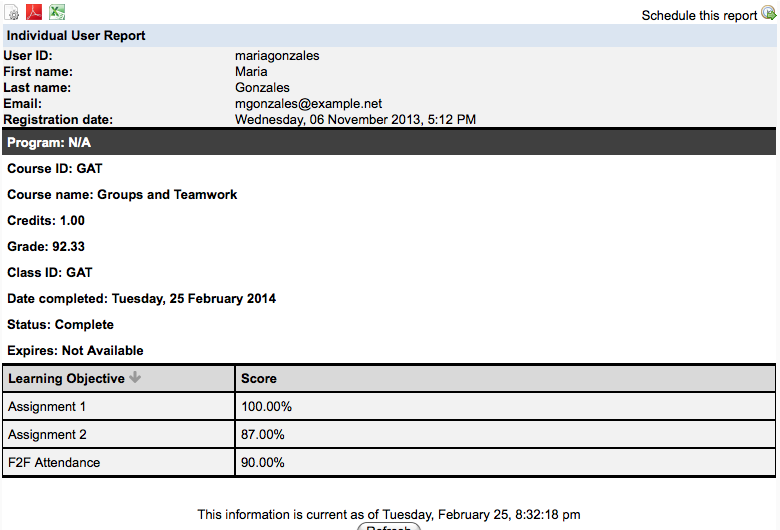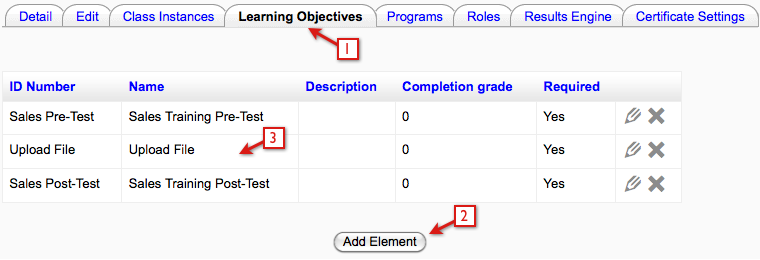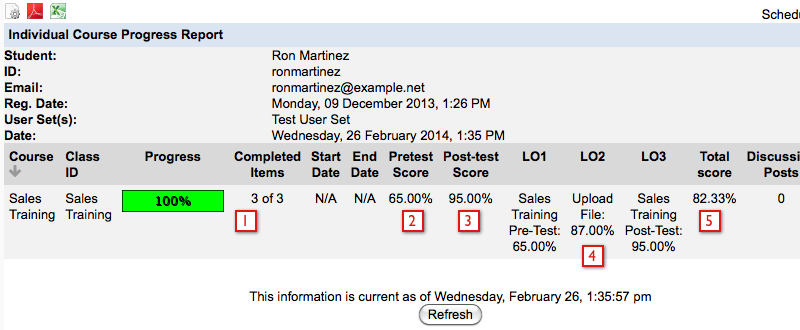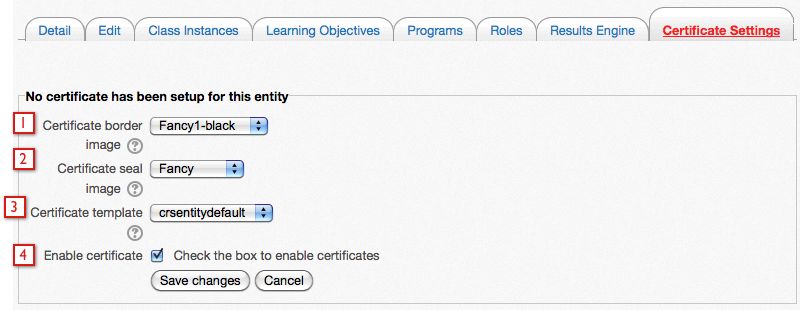ELIS Course descriptions: Difference between revisions
No edit summary |
No edit summary |
||
| Line 22: | Line 22: | ||
<h2>Pre-Test and Post-Test Learning Objectives</h2> | <h2>Pre-Test and Post-Test Learning Objectives</h2> | ||
In ELIS courses, you can assign Pre-assessment and Post-assessments items for | In ELIS courses, you can assign Pre-assessment and Post-assessments items for classes, and then measure the difference between the Pre-assessment and Post-assessments*. This can help you assess if courses are effectively improving targeted knowledge in your program. If you have multiple trainers/teachers teaching the same class you can see the more effective ones over time - their learners show more improvement between the Pre-assessment and Post assessments over time. Also if you make adjustments to content or programs aimed at improving effectiveness, ELIS can help you determine the scope of the improvement. We also have functionality to show how much time learners are spending in the courses- so you can decide whether %5 improvement is worth the time it takes - if it takes extra time - for example.<br /><br />Pre-Test and Post-Test learning objectives should be added to the course as ordinary learning objectives. Pre-test and post-test learning objectives will be counted with other learning objectives in reports, the benefit is that some reports have a separate column for these learning objectives.<br /><br />To add pre-test and post-test learning objectives: | ||
<ol> | <ol> | ||
<li>Go to the Learning Objectives tab of a course description</li> | <li>Go to the Learning Objectives tab of a course description</li> | ||
Revision as of 23:28, 25 June 2014
Course Descriptions
Once you have planned and started the setup of your program, the next step is to add some Course Descriptions which you will add to the new program. To do this, select the Manage Course Descriptions link in the Program Management block.
This will open up the Course Descriptions screen.
Select the "Add Course Description" button to add a new Course Description. The form will ask you to enter some information about your Course Description. There are two required fields:
- Name of Course Description: A Course Description may have many “classes” (or sometimes called sections). This is the name of the parent Course Description. For example a Course Description might be called Moodle 101 - Introduction to Moodle
- Course Description ID: This number can contain numbers, letters, spaces and special characters and will show up on reports. Often people will just use the name of the Course Description here - however if a Course Description has a long name it may cause some issues with the formatting of reports, in which case one might use an abbreviation. Some SIS/MIS/ERP systems can only use numeric tags or have other naming limitations, so the Course Description ID can provide a method to work with these systems if required.
There are other fields on the Course Description form, check the blue 'Help' icons next to the field names for definitions of these fields.
Other optional fields of particular interest are the Completion Grade, the Cost, the Version, and the Course Template in Moodle.
The Course Template in Moodle is a zip file of a complete Moodle Course - when classes are created from the Course Description, they will be created by automatically restoring this zip file. This is useful for batch class creation, when a master Course Description is being used. For example, University A creates 4 tracks of it's Online Teaching Certificate Program, and this action automatically creates all 12 Moodle Courses, with all their associated content, from the Templates set in the Program.
If you enter the Name and Course Description ID, you can always come back to the Course Description editing form and add the other information.
Default Course Description settings
Default Course Description settings can also be set for Course Descriptions as shown in the following image. When adding new Course Descriptions the default settings will be set according to this screen. All of these settings can also be adjusted while adding/editing Course Descriptions. Go to the Program Management block > Admin > Default Course Description Settings.
Default Course Description settings:
Learning Objectives
The old ELIS concept of Completion Elements has been renamed to Learning Objectives to make the purpose of these more clear.
Once the Course Description has been set up, click on the Learning Objectives tab.
- This is the ID Number for the LO in Moodle when it was assigned - this number must be an exact match, including case, with the ID in Moodle.
- Click the Add Element button to add a new Learning Objective to the ELIS Course Description.
TIP: To make it easier for users to read reports that display Learning Objectives, you can use the name of the Learning Objective for the ID Number in Moodle. The only limitation is that Learning Objectives must be unique in a course - you can't have two IDs that both say Assignment 1.
To set the Learning Objective that is linked to a user's grade in a Moodle activity, you can enter the ID number from the Moodle class by going to the Moodle class and locate the Moodle activity you wish to use as a Learning Objective. Or you can use the new Browse functionality to browse the graded activities in the Moodle course, and add them to ELIS.
To use the LO Browse functionality, click the Browse button.
The Browse button shows you all the activities in the Moodle template class.
- The Activities tab, this will list all graded activities in the Moodle template class.
- If the activity has an ID Number, it will be shown in parantheses. Activities still must have ID Numbers in Moodle to be used in ELIS. Click on the Activity to add it to ELIS.
- Gradebook grade items and grade categories will show in this tab, these can also be used as Learning Objectives.
Select the activity then close the browse window. Add the optional Name and Description, and set the grade for which students will be marked complete in the activity. Select Save changes to setup your completion element.
Moodle Gradebook grade items and Moodle Gradebook Categories as ELIS Learning Objectives
Moodle Gradebook grade items and Moodle Gradebook grade categories can be used as Learning Objectives. Gradebook grade items are often used to manage external grades, for example attendance at offline classes, certification tests taken outside Moodle, etc. The are also used to hold scores derived via Moodle's grade calculations.
Grade categories are created in Moodle by pressing the Add category button on either the Simple view or the Full view of the Mooodle gradebook Categories and items section.
When creating a Gradebook grade category to use as an ELIS Learning Objective, enter an ID Number for the Category.
When the Category has been setup in Moodle's Gradebook, you can now locate it back in the ELIS Course Description:
Click the "Grade items" tab to see Gradebook items and Categories. These will work the same way in ELIS as Moodle activities - set a completion grade and when a learner has achieved that score, they will be marked as complete for that LO.
When you create or edit a Gradebook grade item or Gradebook category, you can now use it as a Learning Objective in ELIS.
This function lets you aggregate grades from graded items in Moodle to use them as Learning Objectives.
These will then automatically manage user completion for a Course Description, and can also be viewed on the user report:
* Note that if you want to use Learning Objectives that are not graded in Moodle, only in ELIS, it is important to use an ID number for the Learning Objective that is not matched by any activity ID numbers.
Pre-Test and Post-Test Learning Objectives
In ELIS courses, you can assign Pre-assessment and Post-assessments items for classes, and then measure the difference between the Pre-assessment and Post-assessments*. This can help you assess if courses are effectively improving targeted knowledge in your program. If you have multiple trainers/teachers teaching the same class you can see the more effective ones over time - their learners show more improvement between the Pre-assessment and Post assessments over time. Also if you make adjustments to content or programs aimed at improving effectiveness, ELIS can help you determine the scope of the improvement. We also have functionality to show how much time learners are spending in the courses- so you can decide whether %5 improvement is worth the time it takes - if it takes extra time - for example.
Pre-Test and Post-Test learning objectives should be added to the course as ordinary learning objectives. Pre-test and post-test learning objectives will be counted with other learning objectives in reports, the benefit is that some reports have a separate column for these learning objectives.
To add pre-test and post-test learning objectives:
- Go to the Learning Objectives tab of a course description
- Select the Add Element button and add learning objectives
- Add the pre-test and post-test learning objectives.
Once learning objectives have been added to the course they can be selected from the drop down menu for the pre-test or post-test fields. To edit these fields select the Edit tab for the course.
Only one learning objective can be selected for each field, and once a learning objective is selected for one field it can't be selected for the other field.
The following images have sample reports that have pre-test and post-test data. The first report is the Individual Course Progress Report. The following list briefly explains some areas of the report. It is optional to include pre-test, post-test, and learning objectives in the course, the settings for this are on the report filter page.
- Completed Items: This column shows data for learning objectives in the course. The pre-test and post-test data are included in this column because they are learning objectives. The progress bar to the left of this item shows the percentage of learning objectives completed.
- Pre-test: This column shows the score the user received on the pre-test if there is one for the course.
- Post-test: This column shows the score the user received on the post-test if they received one.
- Learning objectives: The learning objectives for the course are displayed here.
- This course has been completed by the user and they have a grade in ELIS.
The Site Usage Summary Report has pre-test and post-test averages for all the courses on the site.
*By default these are termed "Pre-test" and "Post-test", however it is easy to change these terms (without affecting the functionality:-)) in the Moodle language editor.
Course Certificates
Course Certificates need to be enabled at the site and course level for them to be available to your users. To enable the site setting go to the Program Management block > Admin > Configuration > Certificates. To enable course certificates make sure the checkbox is unchecked. Just the first setting is for course description certificates here, the other certificate settings are for program certificates.
To edit the certificate settings for the course description go the Program Management block > Program > Manage Course Descriptions. Select the Certificate Settings icon next to the course description (shown in the following image) or select the course description name and go to the Certificate Settings tab.
The settings for course certificates are:
- Certificate border image
- Certificate seal image
- Certificate template
- Enable certificate
Select the enable certificate checkbox and then use the other settings to customize the certificate.
Now when a user completes a class instance of this course, they will be able to view and print a certificate. Users can access their certificates by going to the Program Management block > Program > Certificate List. Any certificates earned by the user will be listed, select the certificate name to view it.
